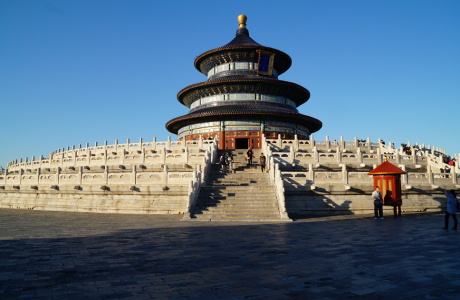After two symposia in Europe (2011 Muenster, Germany; 2013 Oviedo, Spain) this issue brought the symposium back to Asia, where it had started in 2007 (Nagoya, Japan). With respect to participation, the 5th issue could not attract as many participants as former events (Nagoya: 400, Münster: 320, Oviedo: 280). More than half of all participants came from China and those who came from other countries were mostly invited. The limited participation of scientists from Europe is in part the result of very limited information about the symposium that became available on the symposium website only in February this year.
Also the format of the symposium differed substantially from former events. All plenary and keynote lectures were presented in a single stream on Thursday and Friday, while contributed oral presentations were given on Saturday in a two stream format. Interestingly, the program did not follow any order related to topics but simply by alphabetical order of the names of the presenters.
This format created a very dense program, hard to follow and did not allow to create a personal program based on interest into a particular topic. Apart from such organizational features the program touched the many facets of metallomics research with a focus on metalloproteomics. This became already visible in the different topics discussed in plenary lectures.
Hiroki Haraguchi (Nagoya University), in his plenary lecture, gave an overview about the development of metallomics and the related symposium series. Guibin Jiang (Chinese Academy of Sciences) reported about his studies related to the toxicity of mercury species.
Ryszard Lobinski (CNRS, France) reported about the instrumentation used for metallomics research and stressed the point that often more than one techniques has to be applied. However, developments in molecular mass spectrometry with respect to sensitivity and resolution allow for more analytical tasks being performed by these modern instruments (e.g. orbitrap).
Gary Hieftje discussed the possibility of new techniques such as zoom-TOF and DOF-type mass spectrometers.
Chris Le (University of Alberta) discussed the binding of arsenic to proteins and the use of affinity chromatography to separate the target proteins. Hongzhe Sun (University of Hong Kong) discussed metalloproteins in microbes using the example of bismuth. Yuliang Zhao (Chinese Academy of Sciences) reported about the interaction of nanoparticles with biological systems.

Photo: Temple of Heaven (one of the places visited during the city tour)
The symposium ended with a typical Chinese banquet followed by a city tour that allowed to see only very few places due to the dense traffic in Beijing. While the place for the next symposium in 2017 was not announced, it is already clear that it will be in Europe. We will inform about it as soon as possible.
Michael Sperling